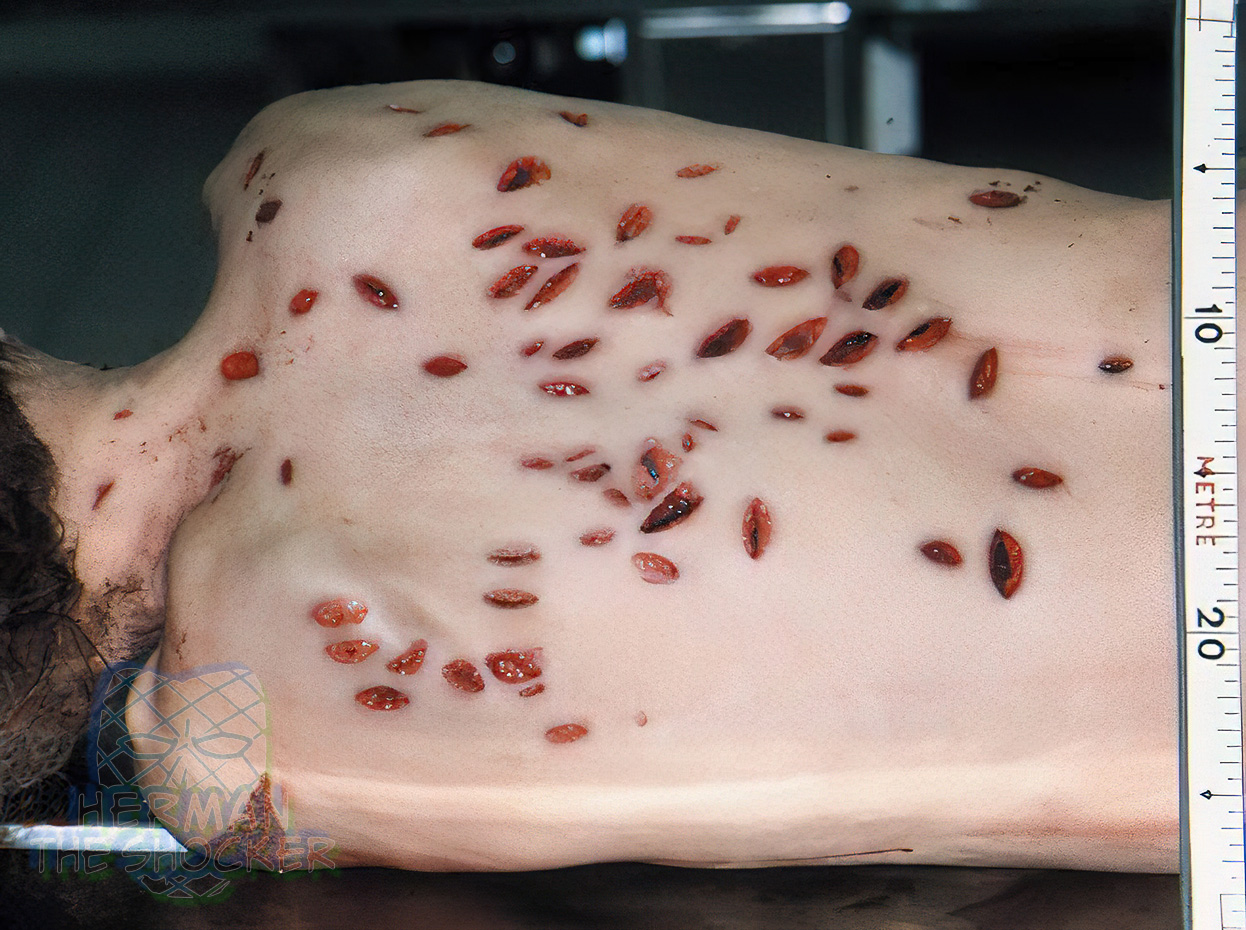This deceased individual has multiple stab wounds on the back from the same knife, showing differing shapes and sizes. No further info. The dimensions of the knife may be a vital part of the investigation of homicide when the weapon has been removed from the scene by the assailant. The pathologist can sometimes assist the investigators by telling them, within limits, what size and type of knife to seek. When suspect weapons are recovered, his inspection of them may indicate whether or not they are consistent with having caused the wounds in question. As always in forensic medicine, however, caution must be employed and the cardinal sin of overinterpretation avoided.
An important factor, however, must always be taken into account because, when the knife is withdrawn the elasticity of the skin causes it to retract, making the wound smaller than when the blade was in the wound. This mechanism may be amplified by contraction of the underlying muscles, which, if at right angles to the axis of the wound, may cause the wound to shorten from end to end while gaping more widely at the center. Using wound measurements to predict the size of the knife blade, one must take into account other matters, such as movement of the blade in the wound, the taper of the blade, and the depth of penetration.
Latest posts









